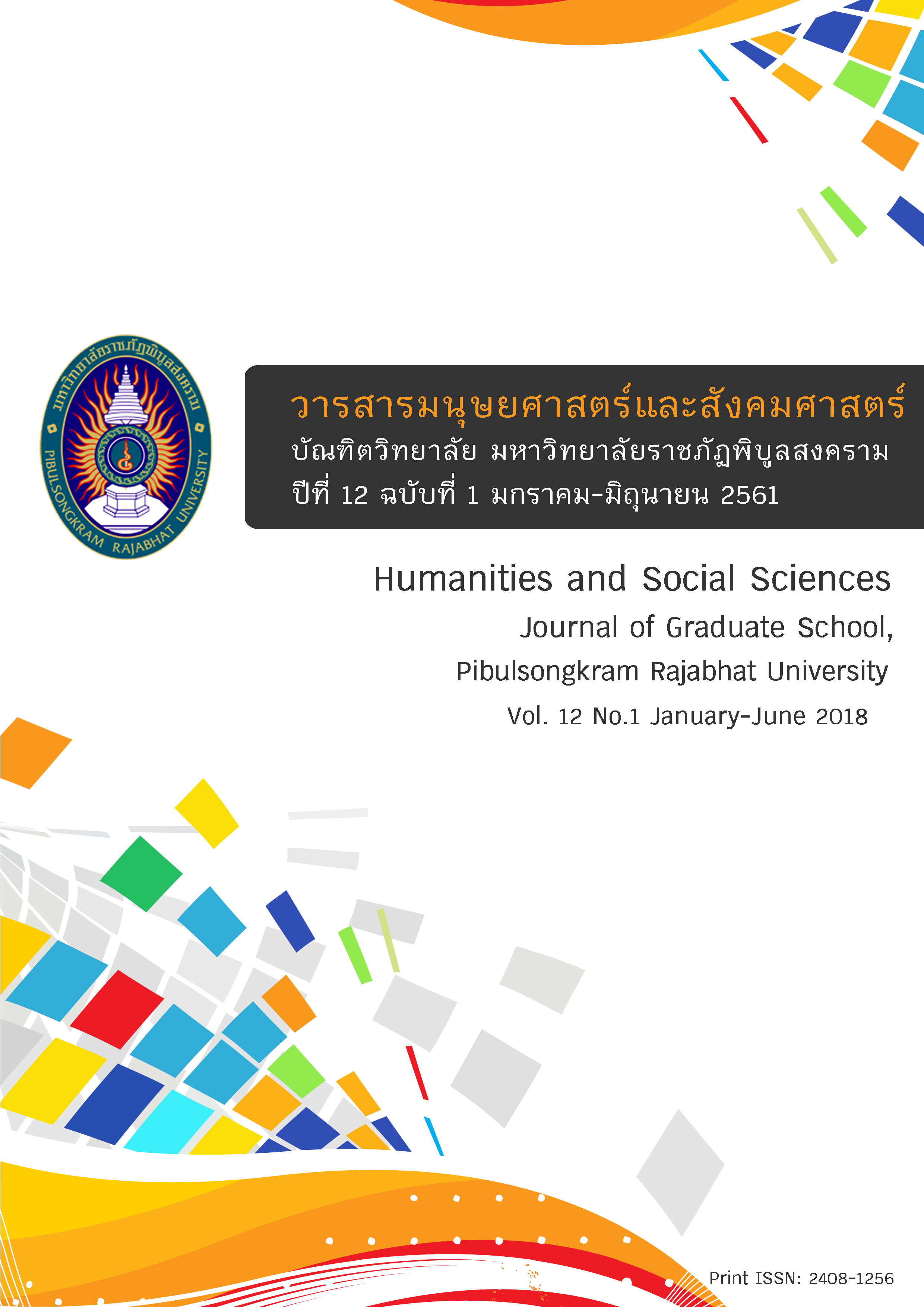Motivation, Organizational Culture, Learning Organization and Private School Effectiveness: Path Analysis
Keywords:
Motivation, Organizational Culture, Learning Organization, Private School EffectivenessAbstract
The objective of this research was to study the paths and the influences of motivation, organizational culture and learning organization affecting private school effectiveness in the north of Thailand. The population was 19,845 owners of school’s license, school directors and teachers. The samples were 900 owners of school’s license, school directors and teachers from 180 private schools in the north of Thailand under the Office of the Private Education Commission by multistage random sampling. The data were collected by using the 6 rating scale questionnaires and analyzed by using mean ( ), standard deviation (SD), Pearson correlation coefficient (r), path analysis and multiple regression.
The research found that the levels of motivation, organizational culture, learning organization and private school effectiveness in the north of Thailand were at a high level. The correlations between motivation, organizational culture, learning organization and private school effectiveness were at a positive level and highly statistically significant at .01. Motivation, organizational culture and learning organization impinged upon private school effectiveness with high significant at .01. All of them were able to predict private school effectiveness statistically significant at .01 at 89.20 percent.
References
พงษ์เทพ จันทสุวรรณ, เอกรัตน์ ดวงปัญญา, ชาญณรงค์ เศวตาภรณ์, และอนงนาฎ ภูมิภักดี. (2555). ภาวะผู้นำการเปลี่ยนแปลง วัฒนธรรมองค์การ องค์การแห่งการเรียนรู้และประสิทธิผลของหน่วยงานในสถานีตำรวจนครบาล: การวิเคราะห์เส้นทาง. วารสารวิชาการมหาวิทยาลัยเจ้าพระยา, 1, 17-34.
พยอม วงษ์พูล. (2558). อิทธิพลของภาวะผู้นำการเปลี่ยนแปลงและองค์การแห่งการเรียนรู้ที่ส่งผลต่อประสิทธิผลโรงเรียนมัธยมศึกษาในเขตจังหวัดภาคเหนือตอนล่างของประเทศไทย. วารสารวิชาการมหาวิทยาลัยกรุงเทพธนบุรี, 4(2), 106-119.
พัชรี เหลืองอุดม. (2554). การศึกษาแรงจูงใจในการปฏิบัติงานของครูที่ส่งผลต่อประสิทธิผลของสถานศึกษา สังกัดสำนักงานเขตพื้นที่การศึกษาประถมศึกษาปทุมธานี เขต 2. (วิทยานิพนธ์ศึกษาศาสตรมหาบัณฑิต) มหาวิทยาลัยเทคโนโลยีราชมงคลธัญบุรี, ปทุมธานี.
วิรุณ อินทร์สิงห์ทอง. (2559). อิทธิพลของคุณภาพชิวิตการทำงานที่ส่งผลต่อความผูกพันต่อองค์การและประสิทธิผลโรงเรียนในเขตภาคเหนือตอนล่างของประเทศไทย. ใน การประชุมวิชาการระดับชาติ ครั้งที่ 2 มหาวิทยาลัยเจ้าพระยา. นครสวรรค์: มหาวิทยาลัยเจ้าพระยา.
ชูศักดิ์ เพชรกระจ่าง. (2559). ภาวะผู้นำการเปลี่ยนแปลงเชิงจริยธรรม วัฒนธรรมองค์การ องค์การแห่งการเรียนรู้และประสิทธิผลโรงเรียนสังกัดสำนักงานเขตพื้นที่การศึกษาประถมศึกษาในจังหวัดนครสวรรค์: การวิเคราะห์เส้นทาง. วารสารสมาคมนักวิจัย, 21(3), 62-74.
สัมฤทธิ์ กลางเพ็ง. (2554). การใช้เกณฑ์แปลความหมายค่าเฉลี่ยจากแบบสอบถามมาตราส่วนประมาณค่า. ค้นเมื่อ 10 มีนาคม 2559 จาก http://www.kroobannok.com/blog/43535.
สำนักงานคณะกรรมการการศึกษาเอกชน. (2558). โรงเรียนในสังกัดสำนักงานคณะกรรมการการศึกษาเอกชน. ค้นเมื่อ 10 มีนาคม 2559 จาก http://www.opec.go.th/webopec/general.
สำนักงานรองรับมาตรฐานและการประเมินคุณภาพการศึกษา (องค์การมหาชน) (สมศ.). (2554). คู่มือการประเมินคุณภาพภายนอกรอบสาม (พ.ศ. 2554-2558) ระดับการศึกษาขั้นพื้นฐาน ฉบับสถานศึกษา พ.ศ. 2554. กรุงเทพฯ: เม็ทช์พอยท์.
Cameron, K. S., & Whetten, D.A. (1981). Perceptions of Organizational Effectiveness OverOrganizational Life Cycles. Administrative Science Quarterly, 27, 524-544.
Denison, D. R. (1990). Corporate culture and organization effectiveness. New York: John Wiley and Sons.
Herzberg, P. (1959). The motivation to work. New York: John Wiley and Sons.
Leech, N. L., Barrett, K.C. & Morgan, G.A. (2005). SPSS for intermediate statistics: Use and Interpretation. (2nd ed.). Mahwah, NJ: Lawrence Erlbaum.
Manville, B. (2001). Learning the new economy. Leader to leader, 20, 36-45.
Marquardt, M. J. (2011). Building the learning organization: Achieving strategic advantage through a commitment to learning. London and Boston: Nicholas Brealey Publishing.
Quinn, R. E. & Rohrbaugh, J. (1983). A spatial model of effectiveness criteria: Towards a competing values approach to organizational analysis. Management Science, 29(3), 363-377.
Robbins, S. P. (1990). Organization Theory: Structure, design, and applications. (3rd ed.). Englewood Cliffs, N.J: Prentice Hall.
Senge, P. M. (1990). The Fifth Discipline: The art and practice of the learning organization. New York: Doubleday.
Wren, C. Y. (1997). Work motivation and perceived organizational effectiveness inmiddle schools. Retrieved April 10, 2014, from http://wwwlib.umi.com/dissertations/fullcit/9637812.
Yamane, T. (1973). Statistics: An introductory analysis. (3rd ed.). New York: Harper and Row publication.
Downloads
Published
How to Cite
Issue
Section
License
Any articles or comments appearing in the Journal of Humanities and Social Sciences, Rajabhat Phibulsongkram University, are the intellectual property of the authors, and do not necessarily reflect the views of the editorial board. Published articles are copyrighted by the Journal of Humanities and Social Sciences, Rajabhat Phibulsongkram University.









